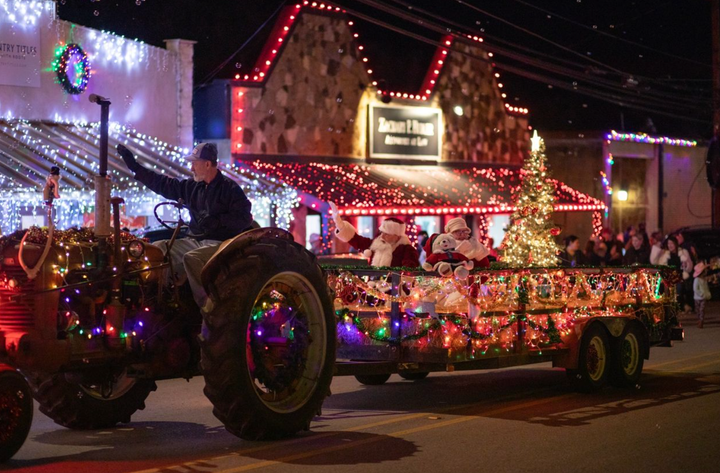The Great Werewolf Novels Of Texas
Four Texas authors have turned the old wolfman trope into something exciting and literary. And the perfect book to pick up during spooky season.

“Werewolves are cool. Texas is cool.” - Shea Serrano
It’s the Halloween season, which means there is no better time to delve into the world of werewolf fiction. For some reason, Texas produces the best werewolf novels in the nation, especially in an era when it seems ninety percent of werewolf fiction is just furry BDSM. There’s nothing wrong with that, but four incredible Texas authors have turned the old wolfman trope into something exciting and literary. And the perfect book to pick up during spooky season.
Mongrels by Stephen Graham Jones
Jones, who was born in Midland, is one of the most important horror authors working today. He has written incomparable deconstructions of the slasher genre in his Indian Lake Trilogy, and The Only Good Indians was the best horror novel of 2020.
His 2016 novel Mongrels combines his two favorite themes: subversion of traditional horror norms and explorations of bigotry. Rather than a noble pack of magical shapeshifters, the werewolves in Mongrels are basically trailer park denizens constantly on the edge of survival thanks to poverty and genetic heritage. Jones tells the story through the lens of an unnamed boy who is growing up in his dysfunctional werewolf family and learning just how stacked the odds of a good life are against him.
The result is basically the To Kill a Mockingbird of werewolf novels, but with an added level of grit and dirt that speaks to anyone trapped in the economically dying parts of Texas.
A Cosmology of Monsters by Shaun Hamill
Shaun Hamill’s debut novel is the least overtly werewolf story on this list, but it features an anthropomorphic wolfwoman as a main character.
Set in North Texas, the book is about a family that runs a popular haunted attraction around Arlington. Noah has grown up working in his family’s haunted house, which has somewhat eroded his sense of reality. On top of that, the mysterious wolf-like creature he sees stalking through the shadows begins to haunt his dreams.
Cosmology is basically John Irving meets H.P. Lovecraft, with a little bit of Clive Barker’s Nightbreed thrown in for spice. It’s no surprise that Hamill uses a werewolf as his ambassador of the shadow world behind his banal carny haunted attraction. The beast exemplifies the line between human and creature, with the terminator in the middle being a terrifying state of neither.
“Werewolf stories are transformative narratives that take our darkest impulses and make them real,” he said in a text interview. When asked why Texas has so many great werewolf stories, he added, “I’m not sure. Maybe it’s the persistence of an oppressive political climate here, encouraging us to appear to conform even when our wild hearts rebel.”
Werewolf Lawyer by Shea Serrano
By far the strangest werewolf novel in Texas came out this year. Shea Serrano is better known for writing about hip-hop and basketball, but his legal novella Werewolf Lawyer is a delightful read that tackles a little-explored corner of the genre.
In his world, werewolves appeared about as dramatically as COVID, turning thousands of people into permanent wolf-people overnight. They experienced immediate distrust and oppression, with many losing their spouses, jobs, and homes. Only one man in the legal world is their champion, Thomas Atwell of Houston.
Atwell is not what you’d call a good guy. His expertise in werewolf law is purely a matter of being master of a profitable niche. However, he ardently defends a client on trial for killing his wife, unraveling a mystery that threatens to put an innocent wolfman on death row.
It’s a fun, quick book that can be finished in a dedicated afternoon, but it’s also something no one else has ever done with werewolves. That alone makes it worth buying, with Serrano’s brilliant prose an enjoyable bonus.
Where Wolf by Rob Saucedo

No one in Houston knows horror films like Rob Saucedo. As the head of programming for Alamo Drafthouse and the River Oaks Theatre in Houston, he has brought more horror to Houston audiences than the sandman. His greatest love in horror, though, is werewolves, particularly the Stephen King film Silver Bullet.
Returning the werewolf to a mystery story as it often was in old European folk tales, Where Wolf follows a young journalist in College Station who tries to uncover a murdering werewolf during a furry convention. Saucedo keeps things gory, but in a fun way. Like, as if someone set Jason Voorhees loose in Mallrats. However, it’s not all zany.
“I've always been drawn to werewolves as a metaphor for addiction and loss of control,” Saucedo said in a phone interview. “I've struggled with addiction myself, and I really respond to the idea of an otherwise good person losing control and doing terrible things but having no memory of them when they wake up. It's a rich metaphor to explore and a wide swath of genres and formats.”
That is a story that can be told anywhere, but the Texas setting makes it all the stronger. The state is struggling. It consistently ranks as one of the worst places to be mentally ill thanks to lack of health insurance options and providers, especially in rural regions. It’s also a hotbed of extremist violence, with multiple violent groups having active chapters here over the last decade. Combined with the state’s well-known penchant for myth-making and extravagance, it’s hardly surprising the werewolf gets so big down here.
“I think there's something about the larger-than-life grandness of Texas that really lends itself to the werewolf myth,” he said. “In a state that can claim home to Pecos Bill lassoing a twister or Big Tech standing guard over the State Fair of Texas, the idea of a giant angry wolfman feels at home in a way more so than, say, vampires, mummies, or goblins.”



Comments ()